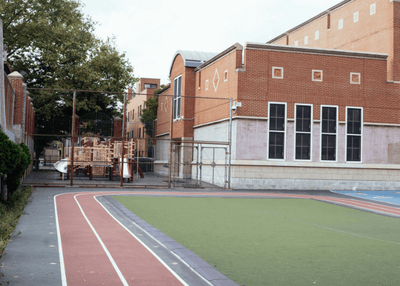Water Quality InformationWritten By Actual Experts
RSSStagnant Water and Lead in School Pipes Are a Health Risk To Children

Problemas que encontramos en el agua potable de la ciudad de Nueva York

New York Passes Bill To Reduce Lead In School Drinking Water

Christina Liu | Hydroviv Science Team
The New York State Legislature recently passed a bill to help make drinking water in schools safer. National Resources Defense Council (NRDC) reported that this bill lowers the Action Level of lead detected at school drinking water taps from the current EPA Action Level of 15 parts per billion (ppb) down to 5 ppb, which is the bottled water lead concentration limit set by the Food and Drug Administration (FDA). The EPA, CDC and the American Academy of Pediatrics (AAP) all recognize that there is no safe level of lead for children. However, the 5 ppb Action Level is much closer to the recommended lead level recommended by the AAP of 1 ppb, so it is a major step forward in helping New York school children access safer drinking water in schools.
The Noah System: Lead-Free Drinking Water For America's Schools

Analies Dyjak, M.A. and Michael Ramos
The unresolved lead crisis in the United States disproportionately impacts young children - especially those in underserved communities. Many schools in the United States were built before 1986, when the use of lead in pipes and plumbing was still allowed. School-aged children who drink water from drinking fountains are exposed to unsafe lead levels on a daily basis. Michael Ramos, the Founder of The Noah System, created a device that automatically flushes water in drinking fountains to reduce the high lead levels in schools.
Why Are We Concerned With Lead in Drinking Water?
Babies and children are the most vulnerable to the long lasting impacts of lead exposure. Lead is a neurotoxin, and can cause lifelong irreversible damages to the brain. Children do not have a fully developed blood-brain barrier, making it easier for “unknown substances,” including lead, to cross into the Central Nervous System. Lead can be mistaken for calcium, in which the body can absorb lead as it would calcium in the brain, blood, bones, and soft tissue. The long term health effects include: slowed growth and development, learning and behavior problems, lowered IQ, attention deficit, hearing and speech problems, and underperformance in schools. Lead was also associated with Autism in a recent study by the National Institutes of Health. According to the Environmental Protection Agency, Centers for Disease Control, and American Academy of Pediatrics, there is no safe level of lead for children. The current allowable level of lead in drinking water in the United States is 15 parts per billion.
The Noah System and The Flint Lead Crisis
Michael Ramos is an engineer for Chicago Public Schools. In February of 2016, like most of the country, he watched as the failures of elected officials crippled the City of Flint, Michigan. Flint officials switched the source water from Lake Huron to the Flint River without considering a corrosion control inhibitor to reduce lead. As a result, 9,000 children under the age of 6 were exposed to unsafe levels of lead. Mr. Ramos thought of his own children, and the children he represented throughout Chicago Public Schools. He started to watch congressional hearings and grew even more concerned when the EPA officials stated that “lead in drinking water would be one of the most challenging tasks the country was going to face.” Chicago has its own ongoing issues with lead in drinking water, which he realized had not been mitigated when a school district detected 3,000 parts per billion (200 times over EPA’s Action Level).
Chicago Has Lead Mitigation Tools In Place. Why Did They Fail?
Many cities across the country, including Chicago, use a chemical called Orthophosphate to help reduce lead levels in drinking water. In order for Orthophosphate to be effective, water must run through the pipes once every 6 hours to build an anti-corrosive crust. Mr. Ramos realized that the drinking water in most schools sits stagnant in pipes for hours - well beyond the 6 hour stagnation period. Orthophosphate is unable to coat the inside of pipes when water sits stagnant overnight, over the weekends, or during school vacations.
Mr. Ramos noted that several school districts across the country flush their pipes in August, as students are getting ready to go back to school. As we now understand, it doesn’t take long for lead to collect in distribution pipes and reach unsafe levels for children. Mr. Ramos noted that a single-flushing event at the beginning of the school year “was not sufficient to make a meaningful impact on lead levels.” In short, lead levels in schools drinking water can be directly correlated to long periods of stagnation.
How Did The Noah System Come To Be?
Mr. Ramos wanted to first ensure that the water coming into his own home was free of lead. “I built a machine that would automatically flush water from the cold water line coming into my house. I took the 6 hour stagnation period and cut it in half, so water would flow through the pipes every 3 hours.” This would allow sufficient time for the Orthophosphate to build a protective crust and significantly reduce lead levels at the tap. He then asked himself: “How do I take what I built in my house and retrofit it for schools?” Mr. Ramos determined that The Noah System could be installed directly in drinking water fountains, and began building systems from his home workshop. In October of 2016, Michael Ramos installed his first Noah System in a Chicago Public School.
How Many Schools Currently Have The Noah System?
Several schools, universities, and office buildings across the country currently use The Noah System.
How Can I Learn More About The Noah System?
You can learn more about The Noah System by visiting https://www.noahsystem.co/. You can also get in touch via email by submitting your information here: https://www.noahsystem.co/pages/contact. You can schedule a free consultation by calling 708-320-3197.
Other Articles We Think You might Enjoy:What Are "Forever Chemicals" And Why Are In My Tap Water?
Do TDS Meters Provide Meaningful Information About Drinking Water?
How Did Hydroviv Filters Perform in a Duke/NC State Water Filter Study?
Lead and Copper Rule: What You Need to Know

Analies Dyjak | Policy Nerd
Updated 12/8/23 to include EPA's new Proposed Lead and Copper Rule Improvements
Since 1991, the Lead and Copper Rule (LCR) has aimed to regulate public drinking water systems by specifically targeting lead and copper contamination. It was created by Congress to protect human health, but there are several exemptions and loopholes that compromise its overall mission. Additionally, it’s still considered to be one of the most complicated environmental statues. This article discusses the major insufficiencies of the Lead and Copper Rule, as well as recommendations to protect your family from drinking water contamination.
How Does Lead Enter Tap Water?
Lead enters tap water through old lead service pipes and plumbing including fixtures and fittings that contain lead. Water that leaves a treatment plant may be in compliance with current EPA standards, but can become contaminated once it enters older infrastructure including an estimated 9.2 million lead service lines that serve water to properties in communities across the United States. Houses built before 1986 were most likely built with lead pipes and lead plumbing.
What are the Health Effects of Lead Contamination in Drinking Water?
The EPA, the Centers for Disease Control and Prevention (CDC), and the American Academy of Pediatrics all agree that there is no known safe level of lead in a child's blood. Even though an action level of 15 parts per billion is currently in place, that is not considered a safe level for children. The regulatory and medical organizations all agree that the only safe level of lead is zero. The scientific community and most regulatory agencies have acknowledged this, but municipalities still follow an extremely high threshold of lead in drinking water. A dose of lead that would have little to no impact on adults can have a significant and lifelong impact on an infant or child. They are the most sensitive population in the case of lead because it’s a neurotoxin and healthy brain development between the years of 0-5 is crucial. Learning disabilities, shorter stature, hearing impairment, and impairment of the formation and function of blood cells are just some of the health effects in children. Pregnant Women are also sensitive to lead contamination in drinking water. Lead accumulates in bones where it’s stored with calcium. Lead is released from bones in the form of maternal calcium which is used to help develop the fetus. Lead can also enter the placenta and have serious developmental effects on the fetus.
What is the Lead and Copper Rule?
The EPA's Lead and Copper Rule (40 CFR Part 141 Subpart 1) is part of the National Primary Drinking Water Regulations under the Safe Drinking Water Act. The rule governs 68,000 public water systems across the United States, and has created provisions to help reduce lead and copper throughout community water systems. While the goals of this statute are in good faith, there are several loopholes, exemptions, and regulatory flaws that don’t necessarily prioritize human health. The most obvious and deceptive flaw is the 90th percentile rule. Only the 90th percentile of users must meet the EPA threshold of 15 parts per billion ( 0.015mg/L ) for lead and 1.3mg/L 1.3 parts per billion (1.3mg/L) for copper. This means that 10% of users can be in exceedance of the threshold and still be in compliance with the law.
What are the Sampling Requirements Under the Lead and Copper Rule?
There are many other components of the EPA's Lead and Copper Rule that leave users confused about what’s in their water. The most profoundly disappointing part of the Lead and Copper Rule is the municipal sampling requirements. The sampling protocol requires municipalities to collect a set number of residential samples, rather than a percentage of households within a community. For example, if a public water system services 100,000 people, they are only required to collect 100 samples, rather than a percentage of the total population. Municipalities that have 10,000-100,000 residents are required to collect 60 samples and municipalities with 3,301-10,000 residents are only required to collect 40 samples. Houses built before 1986, (when the use of household lead pipes became illegal), were most likely built with lead infrastructure. The bottom line is, very few households are made aware of lead contamination. In addition, a public water system servicing less than 50,000 people can be eligible for “reduced monitoring” which decreases the number of samples they are required to collect. Reduced monitoring means that municipalities are only required to collect residential tap water samples once every 3 years. Systems that service 3,300 or fewer people can receive a waiver from the state allowing them to test for lead and copper once every 9 years. 9 years is an unreasonably long time between tests for drinking water quality. Lead concentrations can change overnight, especially if source water or corrosion control measures change.
Who Regulates Lead In Drinking Water?
Municipalities must disclose information about lead and copper in their drinking water to State officials and residents in the form of annual Consumer Confidence Reports. In 2007, revisions were made to the statute that sought to improve transparency between local, state, and federal agencies. The 2007 revisions to the EPA's Lead and Copper Rule require municipalities to notify either state or federal agencies if they have plans to change their treatment methods/source water, or anything else that might in any way increase the corrosion potential of lead. The lead agency is then required to approve these changes before they are implemented. Through this revision, municipal water providers must also notify residents about changes that may affect lead levels. The 2015 lead crisis in Flint, Michigan often comes to mind in this context. It’s important to note that the crisis in Flint occurred after this revision. Protocols were in place, yet regulatory agencies still failed to communicate.
How Are Water Samples Collected and Tested For Lead?
The Lead and Copper Rule developed a sampling protocol for both pre-selected and voluntary households. Municipalities initially pre-select “Tier 1” sites, which are older homes that most likely contain lead lines. However, homeowners can deny testing or fail to submit a sample if they choose to do so. If an inadequate number of Tier 1, Tier 2, or Tier 3 samples are collected, the municipality will then draw samples from “representative sites.” At these sites, local officials are in complete control of how samples are collected. The Lead and Copper Rule requires a 1 liter “first draw” sample, which is water that has been stagnant in plumbing for at least six hours. Samples should be taken from a tap that’s typically used for consumption of drinking water.
Invalidating Lead-Containing Water Samples
A state agency has the authority to invalidate sampling if; the laboratory establishes improper sample analysis causing erroneous results, the state determines that the sample was taken from a site that did not meet the site selection criteria, the sample was damaged in transit or if “there is substantial reason to believe that the sample was subject to tampering.” Essentially, state laboratories can omit samples for a whole breadth of reasons. Several municipalities have been caught cheating the system by discarding samples with high lead levels. Some municipalities instruct residents to “pre-flush” and allow their taps to run for five minutes the night before sampling. This helps to clear stagnant water which completely defeats the purpose because “pre-flushing” has been cited as an effective way to reduce lead levels in drinking water. Other municipalities have told residents to wait until their water “runs cold” before testing, which accomplishes the same thing as pre-flushing.
Are Municipalities Required to Replace Lead Service Lines?
If 10% of water samples exceed the 15 part per billion action level after corrosion control and source water treatment requirements have been met, a municipality must replace 7% of lead service lines per year. Line replacements stop whenever new samples meet the lead action level for two consecutive monitoring periods. Monitoring periods can be anywhere from 6 months, 1 year, 6 years, or even up to 9 years is smaller communities. Once samples exceeding the action level are detected, the system has 12 months after the end of the monitoring period, to submit documents to the state that lay out an action plan.
Current Efforts to Update the Lead and Copper Rule
On November 30, 2023, the U.S. Environmental Protection Agency (EPA) announced new proposed Lead and Copper Rule Improvements.
Key provisions in the proposal include:
- 100% Lead Pipe Replacement within 10 years.
- Locating Legacy Lead Pipes. Water systems are currently required to provide an initial inventory of their lead service lines by October 16, 2024. Under the proposal, all water systems would be required to regularly update their inventories, create a publicly available service line replacement plan, and identify the materials of all service lines of unknown material.
- Improving Tap Sampling. The proposal would make key changes to protocols that water systems must use for tap sampling informed by best practices.
- Lowering the Lead Action Level. EPA is proposing to lower the lead action level from 15 µg/L to 10 µg/L. When a water system’s lead sampling exceeds the action level, the system would be required to inform the public and take action to reduce lead exposure while concurrently working to replace all lead pipes. For example, the system would install or adjust corrosion control treatment to reduce lead that leaches into drinking water.
- Strengthening Protections to Reduce Exposure. Water systems with multiple lead action level exceedances would be required to conduct additional outreach to consumers and make filters certified to reduce lead available to all consumers.
EPA anticipates finalizing the Lead and Copper Rule Improvements prior to October 16, 2024.
Our Take
We need ways to incentivize voluntary lead testing for homeowners as well as at the municipal level. Right now many municipalities may be unaware of lead problems within a community, or overlook these concerns due to the cost of mitigation, because some municipalities legitimately don’t have the funding to properly address longstanding infrastructure issues. In a regulatory sense, the EPA's Lead and Copper Rule has been a convoluted mess. There are so many exemptions and loopholes, and the regulated sampling techniques offer little to no accuracy to what’s in people’s tap water. While the updates to the Lead and Copper Rule are a step in the right direction, actual improvements in water quality in many communities could still be decades away. Here are some recommendations on how to reduce lead exposure from our Water Nerds:
-
Allow your faucet to run for 2 minutes prior to drinking tap water.
-
See if your city or town has a free lead testing program. Washington D.C., New York City, and several other cities have a free lead testing program. If you live in an area that doesn’t have free lead testing, you can pay to send your sample to get laboratory tested.
-
Purchase a filter that is optimized and certified to remove lead from water.
Other Articles We Think You Might Enjoy:
Lead: What You Need To Know About This Toxic Heavy Metal With A Long HistoryThings To Know Before Replacing Your Home's Lead Service Pipes
How To Tell If Your Home Has Lead Plumbing or Lead Fixtures






